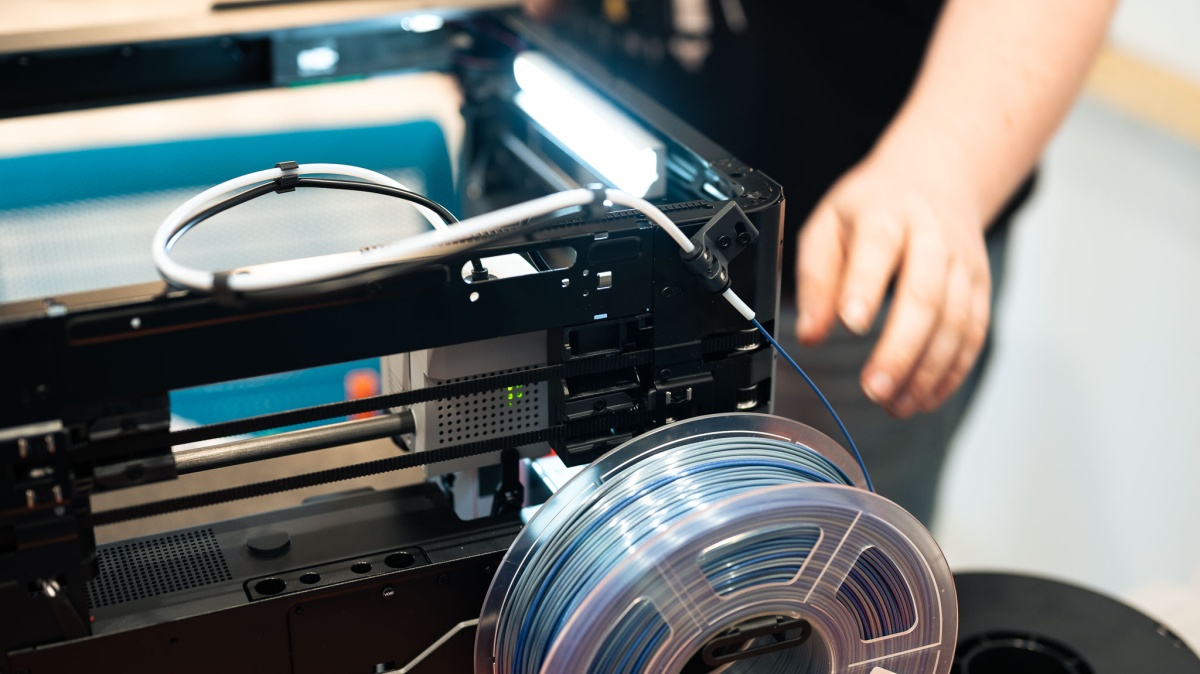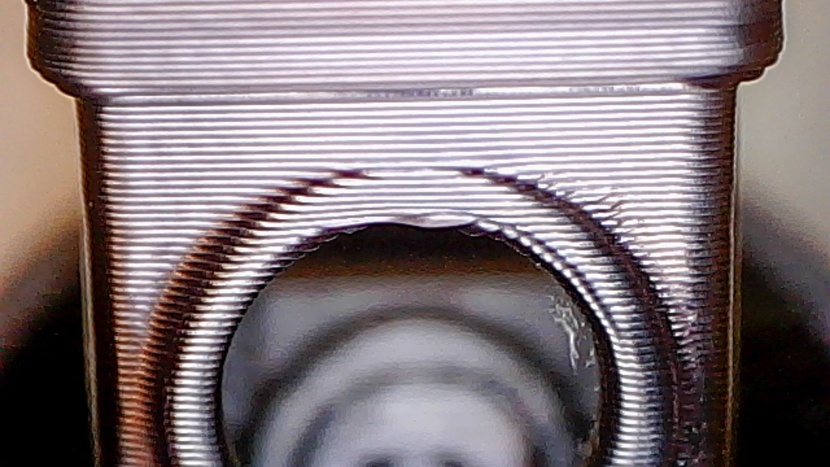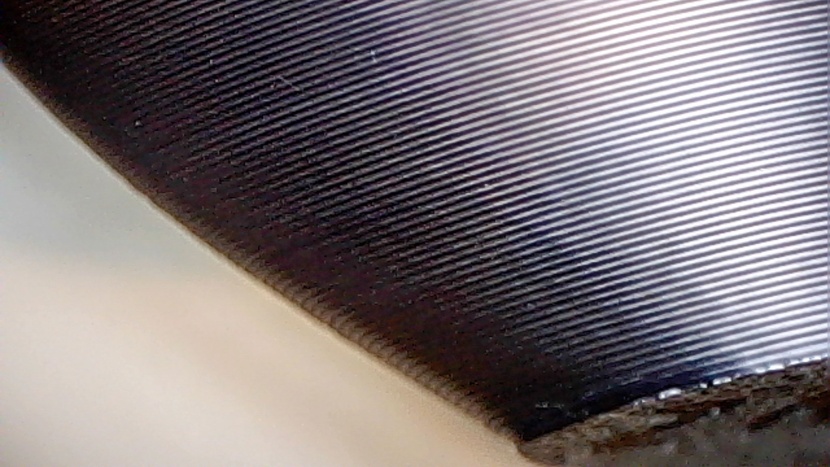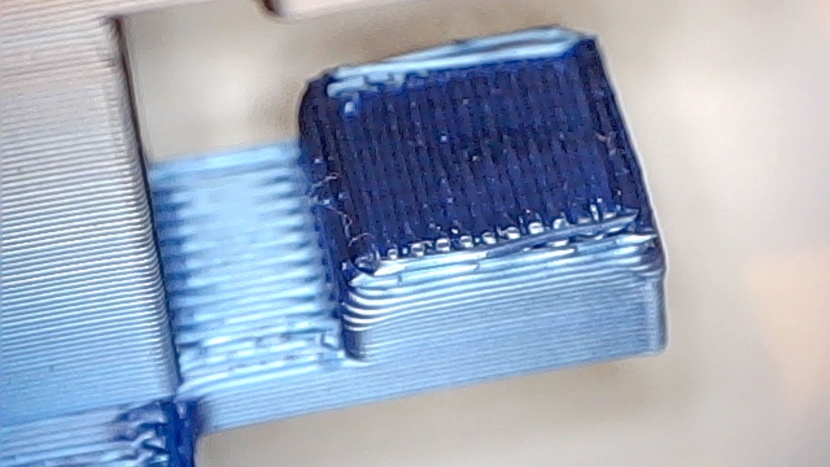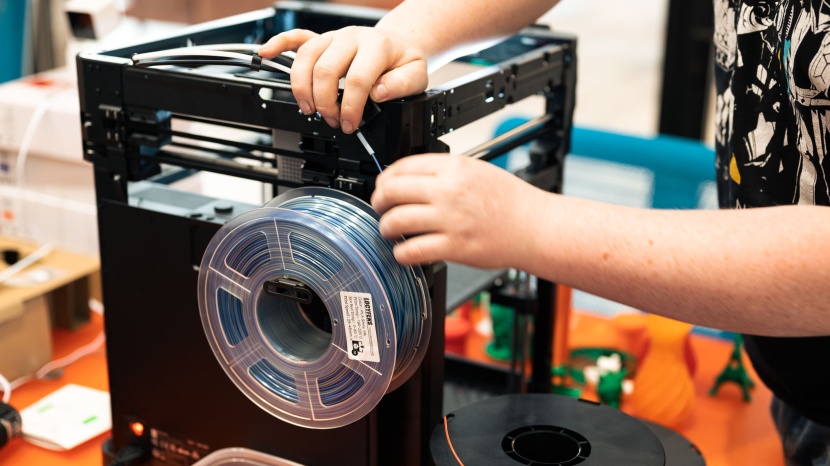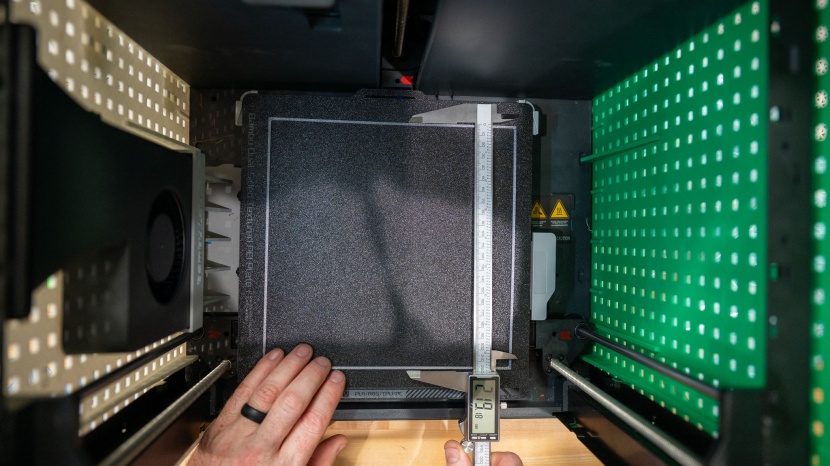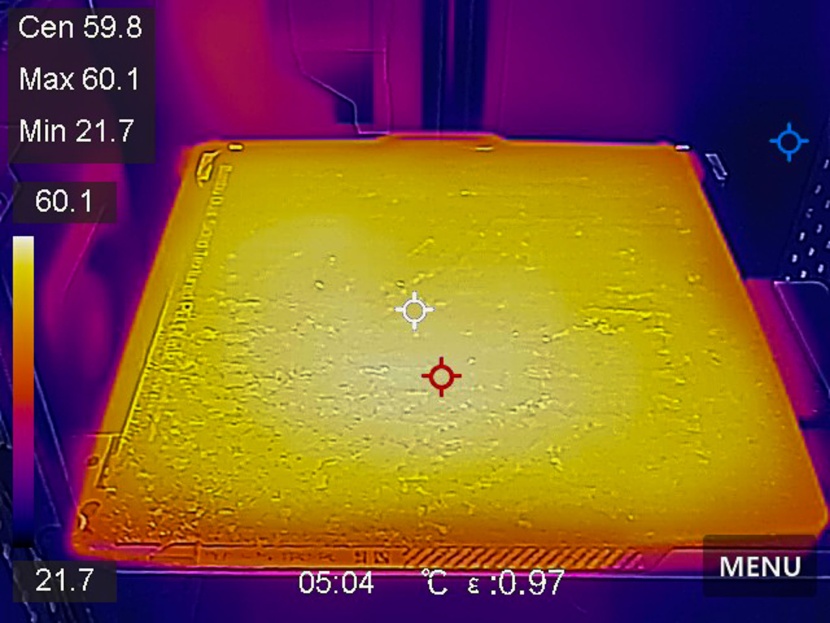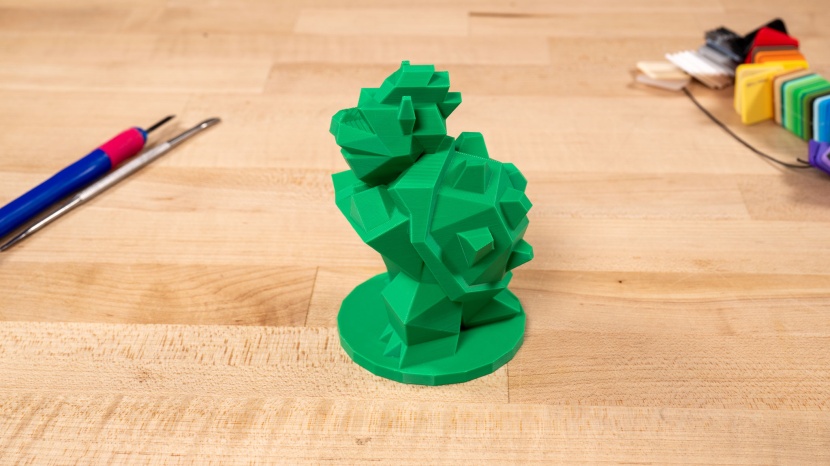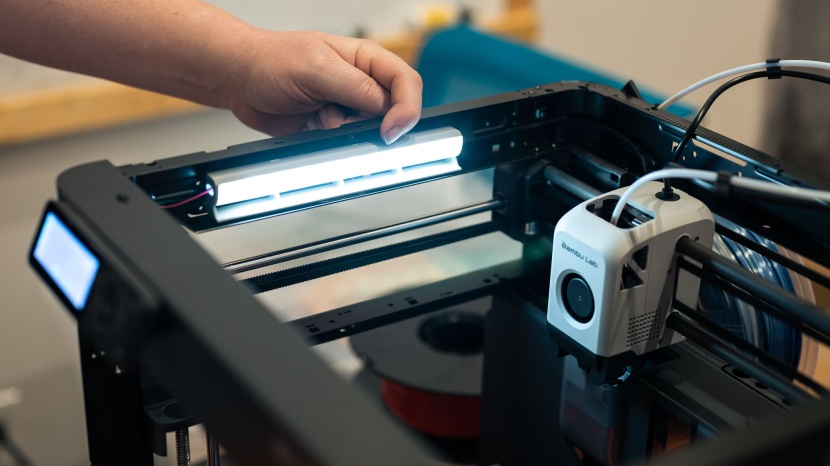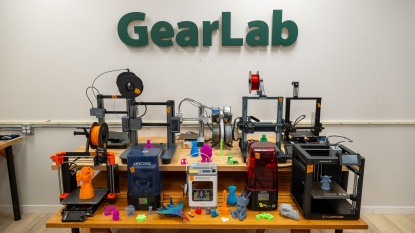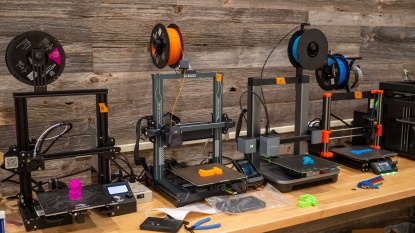Our Verdict
Compare to Similar Products
 This Product Bambu Lab P1P | |||||
|---|---|---|---|---|---|
| Awards | Best Overall 3D Printer | Best Runner Up 3D Printer | Best Entry to Multicolor | Best Value Resin Printer | Best Value FDM Printer |
| Price | $539 List | $300 List | $389 List $365.00 at Amazon | $209 List | $200 List $179.99 at Amazon |
Overall Score  |
|||||
| Star Rating | |||||
| Bottom Line | A great product for standard metrics, and also for the bells and whistles it offers | A polished, reliable 3D printing option for all users | A diminutive, open-air offering from Bambu Lab that packs most of the full-sized features anyone would want | A cost-effective way to get into resin-based printing | A printer that aims a little too hard to be your child's first entry to the community |
| Rating Categories | Bambu Lab P1P | AnkerMake M5C | Bambu Lab A1 mini | Anycubic Photon Mono 2 | Entina Tina2 |
| Print Quality (40%) | |||||
| Ease of Use (30%) | |||||
| Print Capabilities (20%) | |||||
| Support (10%) | |||||
| Specifications | Bambu Lab P1P | AnkerMake M5C | Bambu Lab A1 mini | Anycubic Photon Mono 2 | Entina Tina2 |
| Time to Print a Benchy | 45.30 min | 36.00 min | 44.00 min | 175.50 min | 91.00 min |
| Measured Effective Bed Size | 220mm x 220mm | 205mm x 205mm | 180mm x 180mm | 137mm x 80mm | 120mm x 100mm |
| Bed Temp Gradient | 1.1° C | 3.1° C | 5° C | N/A | N/A |
| Maximum Extruder Temperature | 300 C | 300 C | 300 C | N/A | 245 C |
| Screen Resolutiuon | N/A | N/A | N/A | 4096 x 2560 | N/A |
| Compatible Materials | Ideal: PLA, PETG, TPU, PVA, PET Capable (Enclosure required): PA, PC, ABS, ASA Not Recommended: Carbon/Glass Fiber Reinforced Polymer |
PLA, PETG / PET, ABS, PLA-CF, PETG-CF | PLA, PETG, TPU, PVA | Supports most resins on the market (water-washable, standard, ABS-like, plant-based, etc.) | PLA/PLA+/TPU |
| Build Volume (X x Y x Z) | 256mm x 256mm x 256mm | 220mm x 220mm x 250mm | 180mm x 180mm x 180mm | 143mm x 89mm x 165mm | 100mm x 120mm x 100mm |
| Overall Size | 15.2" x 15.2" x 18.0" | 15.4" x 9.0" x 9.3" | |||
| Self Leveling Bed | Yes | Yes | Yes | No | Yes |
Our Analysis and Test Results
Bambu Lab is a relative newcomer to the 3D Printer field, but its quality and print speed are already becoming well known. Its higher-end X1 series has a generally good reputation, which carries over to this mid-range product and the smaller, more budget offering, the Bambu Lab A1 mini as well.
Print Quality
Eight 3D models were specifically chosen to test different aspects of print quality. We looked at common issues, including bridging & overhangs, wobbles and waves on flat surfaces, and extrusion consistency. Tests were run with PLA, the most common filament type, using a 0.4mm nozzle, with prints set to 0.25mm layer height. In general, standard and/or default settings for both hardware and software were used whenever possible.
Bottom line: the quality achieved by the Lab P1P across our panel of prints resulted in one of the best scores ever, especially for an FDM option. Flat sides and sharp corners impressed with our XYZ Calibration Cube and Z-tower, showing a super consistent smoothness with minimal stringy artifacts. The inset lettering on the cube was crisp, we didn't detect any ghosting, and the overall surface quality was fantastic. Only the tower, as it started to rise, produced any waviness from slight wobbles that started to propagate throughout.
The vase test is a revealing challenge as well. The goal is to print impossibly thin walls made through a single continuous extrusion. The Bambu also achieved near-flawless surface quality in this print without any sign of pronounced stepping between layers. We know the extrusion was well controlled because (nearly) all layers were well fused; only a single pinhole was detected when we tested for watertightness.
Bridging and overhang tests both proved to be decent as well. Supports will usually be used for any unsupported spans, but it's good to know a printer can handle short spans through open space when needed. 20mm and 30mm gaps were no problem for the P1P, but some droops and separation were seen at 40mm and higher. Overhangs started to show stepping and reduced smoothness at around a 50° angle, which is about average. Our support test model printed well, too. Default generation from the slicer (the print prep software) resulted in supports that were easily removable by hand, and we found generally good surfaces remaining at the connection points, other than the underside of a small convex rounded shape.
Our coin fit test is meant to test the dimensional accuracy of a printer. A Nickel is meant to fit line-to-line in a cavity, and we did see a good fit in the end. The X/Y surfaces were a little undersized, though, with some not-so-ideal bridging on the top. Moving parts and clearance, another related test, looks at the minimum size of clearances achievable between articulating parts through a print of a small spinning toy with gaps as small as 0.15mm. When the print was complete, tester Graham Faulknor said, “Some of the smaller gaps did need to be pried apart a bit, but when that was done, the whole toy moved freely without further tinkering.”
Rounding things out, the time-honored Benchy test resolved really well. Again, the surface quality of the print was clean and consistent, and our only complaint was some fine hair-like strings left clinging to the overhangs like spiderwebs. This and other slight imperfections can often be managed through dialing in your slicer settings, but it's good to know the P1P is so solid using even default settings.
Ease of Use
Bambu Lab clearly spent a lot of time and effort making the software and hardware execution side of things a painless experience. Common but not universal or universally well-designed features like an automatic bed leveling program are included, along with some less common nice additions (like an onboard camera!).
The initial build of the machine is simple and easy. The unit arrives almost fully assembled with only a few of the more delicate parts, like the touch screen, ready to be added once out of the box. The whole process took us 15 minutes before we were able to press 'start' on our fist test print.
The slicing software is proprietary, which is a trend we don't love to see, but we expect it to become the norm eventually as the industry continues to mature. Luckily, in this case, the proprietary Bambu Studio software is one of the better new options we've played around with. A prominent calibration table helps ensure things are ready for every print, setting things up to go off without a hitch, and it is supplemented by some robust adjustment settings that you can fine-tune. Overall, the user experience feels straightforward and clean.
Getting your prints from your slicer to the printer can be done through WiFi or transferred offline with a microSD card. Navigating the menus on the physical machine is done through a small, pixelated screen and a few buttons, which feels a little less polished than the rest of the experience.
Another thing of note is that the print bed is perhaps the most well-designed and evenly heated that we've observed, as confirmed through a thermal camera. We didn't have a hint of print adhesion or warping failures throughout the whole process, and we know exactly why. The top plate is removable and flexible, so prints can also be removed in a snap.
Print Capabilities
Our initial review of the advertised specs on the P1P was eye-opening. A 256mm x 256mm x 256mm build volume is about the best we've seen on an affordable FDM consumer product.
However, in practice, putting that claim to the test proved to be an interesting exercise. Bambu Studio fought us as we attempted to prove the full X/Y build size was possible. It wouldn't go past 220mm x 220mm, over which it says the 'risk of collisions' is too high. Eventually, we were able to override this setting, and the full 256mm x 256mm was achievable.
We were also happy to see a maximum extruder temperature of 300°C. For a long time, 260°C has been the unofficial default in the industry (standard PLA prints at about 220°C), but users are beginning to seek out specialty filaments, which usually require higher melting temps. Further heat control is also often needed for good results with these exotic materials, and luckily, the P1P's 'CoreXY structure' (basically meaning it's built like a cube) lends itself to being fully enclosed with a bit of user modification.
The P1P is advertised as having a max print speed of 500mm/s (nearly 20 inches per second), which… is absolutely too fast. In our opinion, this is more of a marketing gimmick than anything. Even with the proven print accuracy we determined, there is no way we'd have confidence that a speeding print head wouldn't catch a lip and ram a taller print over. Anything over about 90mm/s is playing with fire, but the capability is there to push it further if you're brave enough to try.
Instead, we're mainly interested in two other features: the camera and multicolor accessory upgrade. Our tester remarks, “The camera is nothing special resolution-wise, but I had fun using it for some nice time-lapses.” Better, though, is that with the paired app, you can remotely monitor your print and stop it if needed, for example, to prevent material waste or potential damage to the machine in the event of a failure.
Many users will be interested in the P1P and other Bambu products like the Bambu Lab A1 mini because of their multicolor accessories, which they call AMS (Automatic Material System). These can be spendy, but auto-changing filament for multiple colors is a tough challenge, and at least for now, Bambu Lab seems to have done a decent job addressing the market desire.
Support
Support is an area where we've seen some rapid improvement from Bambu in the last year or so. A very comprehensive support wiki covering darn near every topic you could want is among the best in the industry. Complimenting this resource is a fervent and dedicated community of users with collective knowledge accessible via a community forum. Poke around these resources a bit and see if the charm hits you the same way it did us.
As far as traditional customer support, we couldn't find a US-based phone number, but they do have a live chat feature. The average response time when we reached out over email was fine; a day or two between replies was standard. The warranties are a mixed bag: one year for the US and two for the EU, supplemented by a 14-day no-questions-asked return policy. However, the warranty was reduced to just three months for some notable things, like the extruder head and the AMS filament changer.
Should You Buy the Bambu P1P?
So, is the Bambu Lab P1P worth it? We certainly think so. Although it is a bit on the pricey side, it has everything you could want in an FDM printer: great print quality, a polished user experience, and some genuinely uncommon and useful feature upgrades. It is hard to find performance this good in all areas in a single machine, and we thing any user will be satisfied with the prints they can make with the P1P.
What Other 3D Printer Should You Consider?
For FDM printers, you're going to be hard-pressed to find a better option than the P1P. But for those with tighter budgets, the much more affordable AnkerMake M5C offers competitive performance at a more palatable price. The M5c's brother, the M5, is the closest to the P1P in terms of bells and whistles, but for (relatively) affordable multicolor printing, you'll want to take a look at the A1 mini. If you're on the hunt for finer details, this is better achieved with a resin-based printer, and you can pop on over to the Anycubic Photon Mono 2 review and have a look-see.


